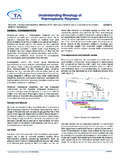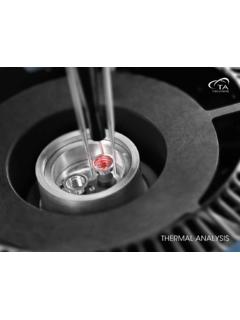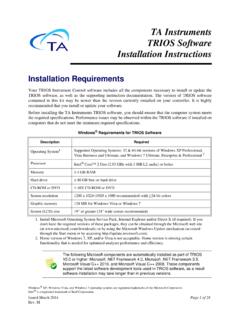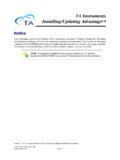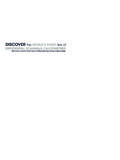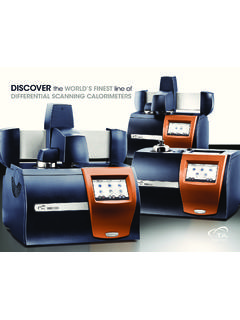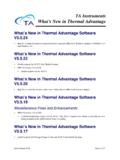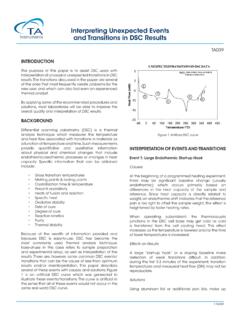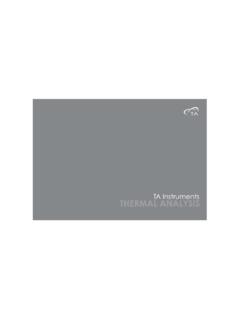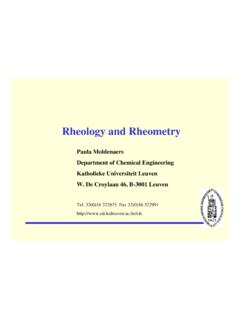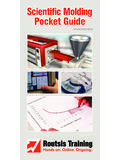Transcription of New Castle, DE USA - TA Instruments
1 ARES-G2 RHEOMETERNew castle , DE USAL indon, UT USAH llhorst, GermanyShanghai, ChinaBeijing, ChinaTokyo, JapanSeoul, South KoreaTaipei, TaiwanBangalore, IndiaSydney, AustraliaGuangzhou, ChinaHong KongEschborn, GermanyWetzlar, GermanyBrussels, BelgiumEtten-Leur, NetherlandsParis, FranceElstree, United KingdomBarcelona, SpainMilano, ItalyWarsaw, PolandPrague, Czech RepublicSollentuna, SwedenHelsinki, FinlandCopenhagen, DenmarkChicago, IL USAS o Paulo, BrazilMexico City, MexicoMontreal, Canadasection titleARES-G2 RheometerThe ARES-G2 is the most advanced rotational rheometer for research and material development.
2 It remains the only commercially available rheometer with a dedicated actuator for deformation control, Torque Rebalance Transducer (TRT), and Force Rebalance Transducer (FRT) for independent shear stress and normal stress measurements. It is recognized by the rheological community as the industry standard to which all other rheometer measurements are compared for accuracy. The ARES-G2 platform offers an array of incomparable features including: Unrivaled data accuracy Unmatched strain and new stress control Fully integrated fast data sampling Separate electronics New Smart Swap environmental systems Patented Active Temperature Control Advanced accessories TRIOS Software providing extreme testing flexibility Large Amplitude Oscillatory Shear (LAOS) and Fourier Transform (FT) rheology Analysis Software package NEW Orthogonal Superposition (OSP) and 2 Dimensional Small Amplitude Oscillatory Shear (2D-SAOS)
3 Techniques NEW DMA mode for measurements of solids in bending, tension and compressionThere simply is no comparison to any other and rheometry THEORYR heology is the study of flow and deformation of materials. Deformation and flow are referred to as strain or strain rate, respectively, and indicate the distance over which a body moves under the influence of an external force, or stress. For this reason, rheology is also considered to be the study of stress-strain relationships in materials. A rheometer is a precision instrument that contains the material of interest in a geometric configuration, controls the environment around it, and applies and measures wide ranges of stress, strain, and strain responses to stress and strain vary from purely viscous to purely elastic to a combination of viscous and elastic behavior, known as viscoelasticity.
4 These behaviors are quantified in material properties such as modulus, viscosity, and Plate (Strain, Strain Rate)GapStationary Plate (Stress)GapStationary Plate(Stress)Modulus = StressStrainViscosity = StressStrain rate2 rheology and RheometryTHE BENEFITS OF rheology Most industrially relevant materials exhibit complex rheological behavior. These properties determine a material s processability and end-use performance. This means that rheological measurements are critical to a wide range of industries including aerospace, asphalt, automotive, ceramics, elastomers, electronics, food, personal care, biomedical, paints and coatings, inks, petroleum products, pharmaceuticals, and more.
5 A rheometer can be used to measure and understand how rheological properties influence every stage of industrial production. Formulation: Measure and predict the consequences of formulations based on chemistry, concentration, and phase structure. Study existing materials and understand formulation based on rheological properties. Processing: Choose formulations and processes that save time, power, and preserve desired finished properties. Performance Prediction: Make a priori predictions of material performance based on known use conditions without specifically mimicking application conditions.
6 Consumer Acceptance: Quantitatively optimize properties that customers perceive as valuable based on consistency, texture, mouth feel, behavior at chewing and swallowing, applicability, spreading, pourability, and stability during = StressStrainARES-G2 TECHNOLOGYThe ARES-G2 provides independent measurements of stress and strainAn accurate mechanical measurement is based on the fundamental assumption of a controlled variable (stimulation) and a measured variable (response). The separation of these key experimental quantities guarantees the greatest accuracy.
7 Moreover, the analytical components dedicated to each task should be optimized to their assigned role. In the case of a modulus measurement, the application of strain and the measurement of stress should be separated, or in the case of a viscosity measurement, the application of strain rate and the measurement of stress are to be decoupled. This is the approach taken by the TA Instruments ARES-G2, leading to measurements free of instrument artifacts over wide ranges of stress, strain, and MotorThe ARES-G2 direct drive motor is designed and optimized to deliver the most accurate rotational motion over wide ranges of angular displacement and velocity.
8 Key components of the design include a rigid air bearing system, an 800 high-torque friction-free brushless DC motor, patented non-contact temperature sensing, and an optical encoder displacement sensor. Designed exclusively for sample deformation, the ARES-G2 motor is characterized by the highest stiffness, best concentricity, and lowest axial run-out, for superior shear and normal stress measurements. Normal Force Rebalance Transducer (FRT)Unmatched normal force measurements are achieved with the ARES-G2 Force Rebalance Transducer (FRT). It consists of an axial servo control system that utilizes position feedback to maintain the FRT shaft in a null position.
9 It delivers the most accurate and fastest transient normal force measurements with unmatched transducer stiffness. = ViscosityStressStrain RateTorque Rebalance Transducer (TRT)The current required to maintain the transducer shaft at null deflection enables direct measurements of sample torque using the ARES-G2 Torque Rebalance Transducer (TRT). This quasi-infinitely stiff transducer features a dynamic torque range of 5,000,000 to 1, a robust air bearing, a high resolution capacitive angle sensor (Patent # 7,075,317 and 7,135,874), and new non-contact upper temperature sensor (Patent # 6,931,915).
10 The independent and stationary torque measurement eliminates the need to correct for motor friction and inertia, which translates to the purest torque measurement Temperature Control (ATC)The ARES-G2 incorporates patented non-contact temperature sensor technology for active measurement and control of both the upper and lower plate temperature (Patent # 6,931,915). Platinum Resistance Thermometers (PRTs) are directly connected in the motor and transducer shafts. These PRTs are positioned in intimate contact with the center of the lower and upper measurement surfaces.
